Vivid sketchbook of memories and a lost era in the Yorkshire Dales brought to life in Story of Schools
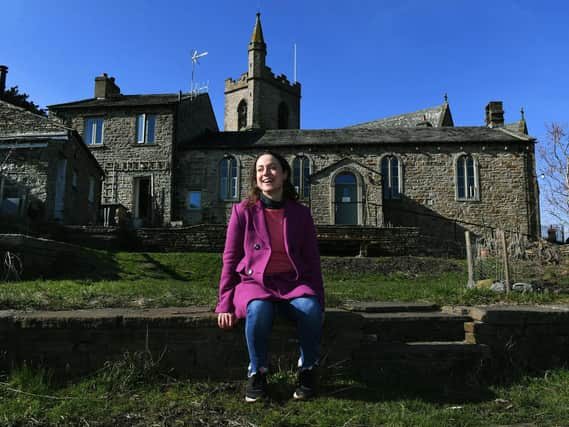

These echoes of memory, so easy to fade, have been captured for eternity in a project encompassing the Story of Schools in the Dales.
Now, as a near-forgotten age is brought to life by those with lived experience, a vivid picture begins to emerge of a lost era for one of Britain's remotest communities.
Advertisement
Hide AdAdvertisement
Hide AdYet even in a century of societal change there are trends that turn full circle, said Emily Rowe Rawlence, of community dance studio The Nash in Hawes, who instigated the project.


All too familiar tales have emerged of gardening lessons for lunch, she said, school closures to fumigate, and a now reversing exodus of young people in search of a better life.
"These stories bring the last century to life in a new way," she said. "It shows the effort that went into these schools, and in a way that we wouldn't be able to appreciate."
The Story of Schools, from The Nash with Dales Countryside Museum, delves into people's memories of education in Upper Wensleydale, Arkengarthdale and Swaledale.
Advertisement
Hide AdAdvertisement
Hide Ad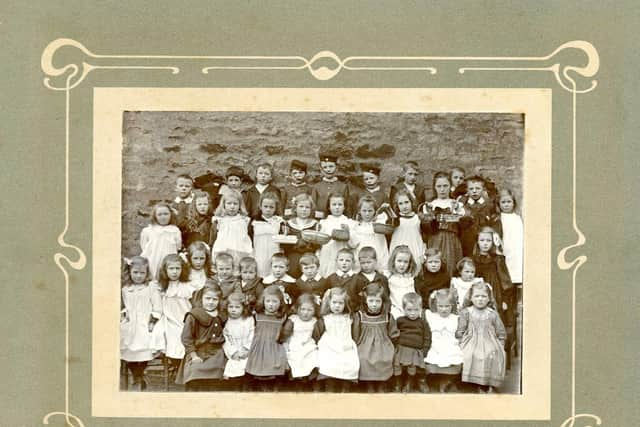

An oral history has been collected in interviews with people who attended from the 1930s through to the 1960s, uncovering riveting tales of the war years, discipline and truancy.
For Ms Rowe Rawlence, the catalyst had been in her own family home, a former Victorian National School founded in 1845 but which closed when Hawes Primary opened.
Dilapidated and run down, it has since been renovated to become a community dance studio known as The Nash, but throughout the Dales, she said, there are these 'invisible' buildings.
"We would look around these little villages, and see the ghosts of all these old schools, and the stories they have to tell," said Ms Rowe Rawlence.
Advertisement
Hide AdAdvertisement
Hide Ad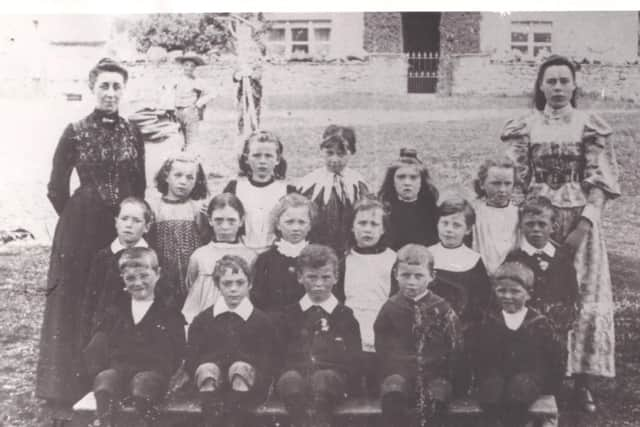

"It's amazing to think how much our thinking has changed about education in a century."
Digging up 'taties' for school dinners
Among the memories shared of schooldays in the Upper Dales are tales of nature trails in a flat wagon and taking the cane for misdemeanors.
One gentleman remembers digging up 'taties and cabbage' in the school gardens in the 1950s, for a local woman who could make "owt of nowt" for a hot school dinner.
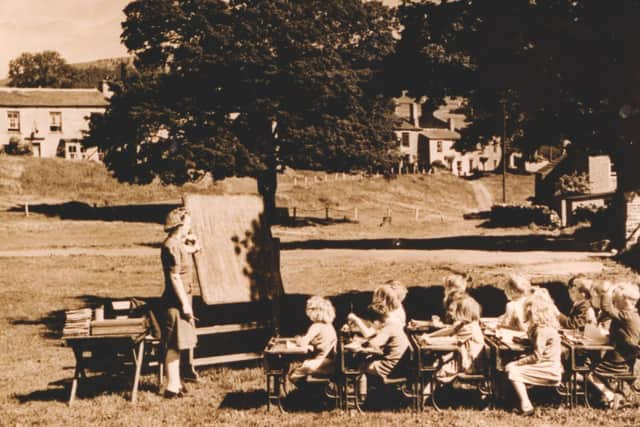

Another, in Reeth, tells of how students were sent to clear a swarm of bees, and a third account details children climbing the fells at 4.15am to watch a total eclipse in 1927.
Advertisement
Hide AdAdvertisement
Hide AdThis is a vivid sketchbook of a lost time, when discipline could be harsh and education was for the few that could afford it. In the Dales, it also revolved around the farming year.
Uncovered school logbooks amplify headteachers' frustration at students' attendance, which could be hampered by snow, a fox hunt, or the demands of household chores.
At Gunnerside, in 1863, logs showed a "great many" senior girls would stay home on Mondays to help their mothers wash. In Arkengarthdale in 1876 children were too busy on the peat moors to attend lessons.
Tales of the 'kiddy catchers'
Compulsory schooling for under 10s was introduced in 1880, but it was another 11 years before it was free, putting poorer families in a difficult position, said Ms Rowe Rawlence.
Advertisement
Hide AdAdvertisement
Hide Ad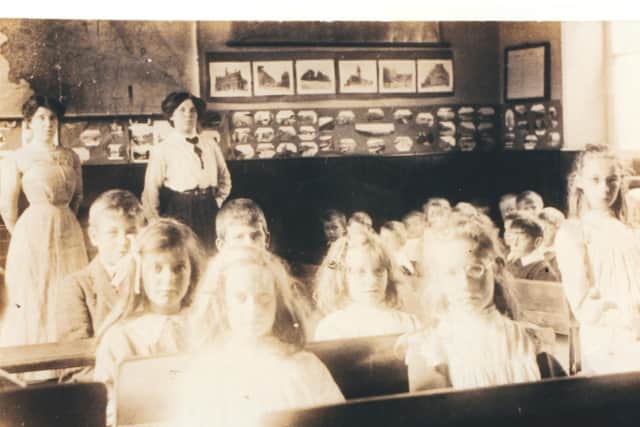

From then on, there are records of the 'kiddy catchers', who would roam the Dales by rail or on foot, and even on a motorbike, to rally up the children and return them to lessons.
"There was this idea that the learning at school just wasn't relevant to their lives," she said. "Certainly, knowing how to farm was more relevant to their survival.
"When it became compulsory to attend secondary as children, we can track children leaving the Dales, and not always coming back again. They got a taste of a different life."
The war years had a significant impact upon a long entrenched way of life. Children, arriving by rail, would wave cheerily through the windows as crowds gathered to watch.
Advertisement
Hide AdAdvertisement
Hide AdBut within a week, a school could double in size, teachers reporting they were "run ragged" by a sudden influx of students unaccustomed to such classrooms.
One woman tells of a little boy in Arkengarthdale, forced to eat his dinner on the doorstep as he wasn't welcome at the family table. Her own mother took him in.
"It boiled down to this conflict between city and country," said Ms Rowe Rawlence. "Some evacuees had lovely, idyllic memories of the Dales. Others have such traumatic stories."
School closures and fevers
With support from the National Lottery Heritage Fund and Sustainable Development Fund, work on the Story of Schools has been underway since last year.
Advertisement
Hide AdAdvertisement
Hide AdWhile planned study sessions with local schools and immersive Victorian classroom experiences were postponed due to lockdown, interviews have been possible at times.
Among more recollections that emerged are tales of summer nights playing cricket or rounders, the peal of a school bell, and being sent for cigarettes by a school master.
Then there are the stories of school closures, as outbreaks of illness and local epidemics such as whooping cough or scarlet fever swept through the classrooms.
One log from Reeth Friends' School in 1892 reports the school was closed for two weeks for measles, allowing the rooms to be disinfected with sulphur.
A familiar tale
Advertisement
Hide AdAdvertisement
Hide AdSuch stories, said Ms Rowe Rawlence, signal a familiar echo which resonates today.
Not only in school closures or a recent return to favour for gardening lessons, but in a well-documented cycle of young people leaving the Dales, now beginning to return.
There is a dawning realisation, she said, over a way of life that was once lost but is beginning to return, and is revived in the lessons of history.
"This isn't about how life was better in the past," she said. "That tide is turning. We can see these echoes of a time past beginning to come full circle."
Story of Schools
Advertisement
Hide AdAdvertisement
Hide AdA major exhibition of a Story of Schools is hoped to open at Dales Countryside Museum in May, featuring interpretation boards, audio recordings, a short film and artefacts.
As part of the research, thousands of photographs have been collected for a huge community artwork, A Mosaic of Dales Youth, with The People's Picture.
A podcast series featuring more than two dozen people has also been published. Journalist Andrew Fagg drew on the museum's oral history collection and interviews to create Voices from the Dales. The first series, launched earlier this month, features stories from Dales schools and chapels, as well as poetry and the story of the museum itself.
_____________________________________________________________________
Advertisement
Hide AdAdvertisement
Hide AdSupport The Yorkshire Post and become a subscriber today. Your subscription will help us to continue to bring quality news to the people of Yorkshire. In return, you'll see fewer ads on site, get free access to our app and receive exclusive members-only offers. Click here to subscribe.